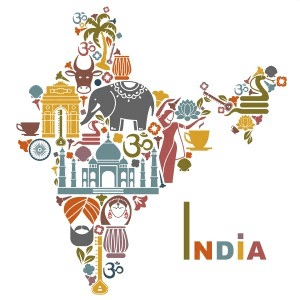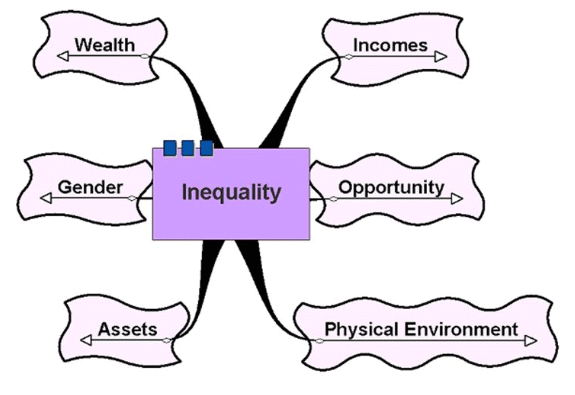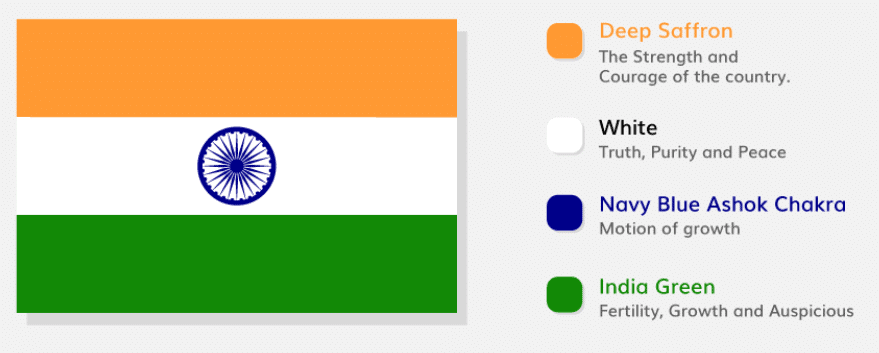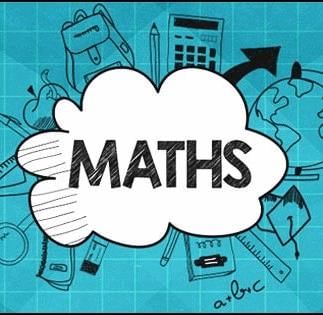Class 6 Civics Chapter 1 Question Answers - Understanding Diversity
SHORT ANSWER TYPE QUESTIONS
Q.1. Why India is called a secular state?
Ans. People of different religions and faiths have freedom to practice and follow their religion.
Q.2. Define Diversity.
Ans. Diversity means “variety” and “being different”. It is a product of different geography, culture and history. Diversity is more than just tolerating the differences. It is respecting and understanding the varying differences among individuals in society.
 Fig: Diversity in India
Fig: Diversity in India
Q.3. What does diversity add to our lives?
Ans. Diversity in art and literature, clothes, food, festivals, languages becomes the part and parcel of our lives. Hence, it gives a new outlook to the people about the rich heritage of India.
Q.4. Explain the main cause of diversity in India.
Ans. The migration of people is the main cause of diversity. In ancient period, people migrate from one part of the world to another part. They travelled in ships, on horses or camels or on foot. People migrated in search of jobs, for new lands or for trade relations. Few people migrated because of the natural calamities like, drought and famine. War was also one of the important causes for the people to migrate to a place where they could live happily.
Q.5. What do you mean by inequality? Give an example of it.
Ans. Inequality means the unavailability of resources and opportunities for different people. The caste system is an example of inequality. Inequality has various forms like:- Economic inequality comprises all disparities in the distribution of economic assets and income. Social inequality refers to a lack of social equality, where individuals in a society do not have equal social status, adequate provisions of healthcare facilities etc.
 Fig: Types of Inequality
Fig: Types of Inequality
Q.6. Define political inequality.
Ans. Political inequality is where people are not given the voting rights, freedom of speech and assembly, freedom to contest elections and so on.
Q.7. What had Nehru tried to explain about India's unity in his book ''The Discovery of India?''
Ans. Nehru said that India's unity is not something imposed from outside but that it is something deeper and within its fold, the widest tolerance of belief and custom is practiced and every variety acknowledged and even encouraged.
Q.8. Write short notes on Jallianwalla Bagh massacre.
Ans. On the afternoon of April 13, a crowd of at least 10,000 men, women, and children gathered in the Jallianwala Bagh, which was nearly completely enclosed by walls and had only one exit. People had gathered in a peaceful protest defying the orders on public meetings and some had come to the city from the surrounding region to celebrate Baisakhi, a spring festival. The British Army officer Dyer and his soldiers arrived and sealed off the exit. Without warning, the troops opened fire on the crowd, reportedly shooting hundreds of rounds until they ran out of ammunition. The Bagh, enclosed from all four sides with buildings, had only one main entrance that was blocked by Dyer's troops. Other smaller gates were locked and people fleeing from the firing were shot. Many of them jumped to their death in a well inside the garden. After they ceased firing, the troops immediately withdrew from the place, leaving behind the dead and wounded.
Q.9. Discuss the economy of Ladakh.
Ans. The Ladakh economy traditionally has been based on the small farms and on herding. The economy of Ladakh is stable and self reliant agricultural economy. Pashmina, Ladakh's only export apart from dried apricots, is the main source of cash income. With the development of tourism sector, its economy has further been strengthened.
Q.10. Which factors influence Diversity?
Ans. Historical and Geographical factors influence Diversity.
Q.11. What is sung by both Muslims and Buddhists together in Ladakh?
Ans. Local versions of the Tibetan national epic the Kesar Saga are performed and sung by both Muslims and Buddhists.
Q.12. Mention any two popular costumes of Ladakh?
Ans. Pheran and Kasaba are the two popular costumes of Ladakh.
Q.13. What is the story of Indian flag?
Ans. It was used as a symbol of protest against the British by people everywhere.
Q.14. Explain the theme of the book the “Discovery of India”?
Ans. The book gives a complete view of Indian history, philosophy and culture. Pandit Jawaharlal Nehru studied the history of India starting from the Indus civilization to Aryans invasion and then to the British rule. The effect of these people on Indian culture and their incorporation to Indian society was examined in the book.
Q.15. What is the significance of the colour and chakra of Indian National Flag?
Ans. The saffron colour indicates renunciation of disinterestedness(impartial). The white in the centre marks the path of truth to guide our conduct. The green shows our relation to soil, to the plant life here on which all other life depends. The Ashoka wheel in the centre is the wheel of law of dharma.
 Fig: Indian National Flag Colour
Fig: Indian National Flag Colour
Q.16. Write short notes on any two festivals celebrated by the Muslims of India?
Ans. The two important festivals that are celebrated in India by the Muslims are:
(i) Muharram: The festival celebrates the martyrdom of the Prophet Mohammed’s grandson, Hazrat Imam Hussein. The Shia Muslim community celebrates it in a grand manner.
(ii) Id-ul- Fitr: Id-Ul-Fitr is also known as the festival of breaking of the fast. It is celebrated at the end of the month Ramadan. It is an occasion of feasting and rejoicing.
Q.17. What is a famine? Mention any two great famines of India?
Ans. Famine is a phenomenon in which a large percentage of populations of a country are undernourished. It is usually associated with crop failure. The two great famines that India experienced were the first Bengal famine, 1770 and the second Bengal famine of 1943.
Q.18. What is meant by drought? Mention any two droughts affected States of India?
Ans. A drought is a dry weather that persists long enough to cause problems such as crop damage and water supply shortages. The two states that are severely affected by drought are Rajasthan and Gujarat.
Q.19. Which things drew traders to Ladakh and Kerala?
Ans. It was geography of Kerala which allowed for the cultivation of spices and the geographical location of Ladakh and wool that drew traders over here.
Q.20. What has been recognized as India’s strength?
Ans. India’s diversity has been always recognized as its strength.
Q.21. What do you think living in India with its rich heritage of diversity adds to your life?
Ans. India does not have a uniform culture. It has diversity of cultural practices, languages, custom and tradition. People of India get an opportunity to enjoy all these diverse nature in their day to day life.
Q.22. State three differences between the people of Ladakh and Kerala.
Ans.
| Kerala | Ladakh |
| 1. Kerala is a state. | 1. Ladakh is a Union Territory |
| 2. It is surrounded by the sea on one side. | 2. It is a cold place surrounded with mountains. |
| 3. People practise religion such as Judaism, Islam, Christianity, Hinduism and Buddhism. | 3. People practise Buddhism and Islam. |
| 4. It is located in the southern part of India. | 4. It is located in the northern part of India. |
Q.23. Why was Ladakh considered to be a good trade route for the ancient traders from China and Europe?
Ans. Ladakh was a major trading centre on the Silk route between China and the Mediterranean. It was considered to be a good trade route as it had many passes through which caravans travelled to Tibet. As a result, Ladakh came to be known as ‘Land of Passes’. The caravans carried textiles and spices, raw silk and carpets.
Q.24. Why are Pashmina shawls expensive?
Ans. Pashmina shawls are expensive shawls in the markets of Ladakh and in the other parts of India. The reason being that the wool comes from mountain goats called Changra and only a small portion of the goat hair can be used to make pure Pashmina. The manufacturing of shawls requires great skill. The wool is famous for its softness, warmth lightness and beautiful dyes.
Q.25. Is the climate of Ladakh suitable for agriculture? Explain.
Ans. No, the climate of Ladakh is not suitable for agriculture. The region receives very less rainfall and is covered by snow for a large part of the year.
Q.26. Discuss the trade relations of Ladakh with Tibet?
Ans. Ladakh was considered as a good trade route as it had many passes through which caravans travelled to Tibet. Caravans were used to carry goods to Tibet. Ladakh carried goods like textiles, spices, raw silk and carpets.
Q.27. What do you mean by ‘Nomade’?
Ans. A nomad is a member of a community without fixed habitation which regularly moves to and from the same areas. Such groups include hunter-gatherers, pastoral nomads.
LONG ANSWER TYPE QUESTIONS
Q.1. How do we explain diversity?
Ans. The concept of diversity includes acceptance and respect. It means understanding that each individual is unique, and recognizing our individual differences. These can be along the dimensions of race, ethnicity, gender, sexual orientation, socio-economic status, age, physical abilities, religious beliefs, political beliefs, or other ideologies. It is the exploration of these differences in a safe, positive, and nurturing environment.
Q.2. Explain the Jallianwala Bagh massacre.
Ans. On the afternoon of April 13, a crowd of at least 10,000 men, women, and children gathered in the Jallianwala Bagh, which was nearly completely enclosed by walls and had only one exit. People had gathered in a peaceful protest defying the orders on public meetings and some had come to the city from the surrounding region to celebrate Baisakhi, a spring festival.
 Fig: Jallianwala Bagh Massacre
Fig: Jallianwala Bagh Massacre
The British Army officer Dyer and his soldiers arrived and sealed off the exit. Without warning, the troops opened fire on the crowd, reportedly shooting hundreds of rounds until they ran out of ammunition. The Bagh, enclosed from all four sides with buildings, had only one main entrance that was blocked by Dyer's troops. Other smaller gates were locked and people fleeing from the firing were shot. Many of them jumped to their death in a well inside the garden. After they ceased firing, the troops immediately withdrew from the place, leaving behind the dead and wounded.
Q.3. Why Kerala is called as the 'land of coconuts'? What products are made out of coir in Kerala?
Ans. The State Kerala derives its name from the Malayalam word 'Kera' meaning the coconut palm and ‘Alam’ meaning the place. Coconut forms a part of their daily diet. Coir is an important eco-friendly material and is obtained from the coconut husk. Kerala is considered to be the largest producer of coir. Products such as flooring, mats, carpets, wall hangings and bags are made from coir fiber.
Q.4. What difficulties will the writers face if the world was without diversity? Explain with example.
Ans. Imagine a world, where everything was the same. Other than the same two colours red and white, same food (maybe potatoes!), the same two animals, for example, the deer and the cat, and snakes and ladders, the same game, there was nothing different. There would be no diversity and it would be dull. The story writers will not have anything to write about, as most depend on ideas drawn from their experiences and real-life encounters to make stories more interesting and filled with fun.
Q.5. From where do the story writers get their ideas?
Ans. The story writers will not have anything to write about, as most depend on ideas drawn from their experiences and real-life encounters to make stories more interesting and filled with fun.
Q.6. Imagine what kind of story would the story tellers write if we did not had diversity in life?
Ans. They would write same kind of stories with no exception, no imagination and no change In it.
Q.7. If writers were forced to live in a place where all people wore the same two colours red and white, ate the same food (maybe potatoes!), took care of the same two animals, for example, the deer and the cat, and to entertain themselves played snakes and ladders. What kind of stories do you think they will write?
Ans. If writers were forced to live in a condition as above they would write a few stories with only two colours, two animals and one food item. There would be no diversity in stories and they would become boring.
Q.8. Describe how did caste system create an inequality in the society?
Ans. The caste system is another example of inequality. According to this, society was divided into different groups depending upon the work that people did and they were supposed to remain in those groups. So if your parents were potters you could only become a potter, nothing else. This system was considered irreversible. And because you were not supposed to change your profession, it was not considered necessary for you to know anything more than what you needed in your profession. This created a situation of inequality.
Q.9. Describe how does the Diversity in India still keep us together?
Ans. India is a country of Diversity. We speak different languages, have various types of food, celebrate different festivals, practise different religions. But actually, if you think about it, we do many things that are similar except that we do them in different ways.
Q.10. Why did people travel in the past?
Ans. The people travelled in the past because:
- Discover new lands for settling.
- Discover new lands for trade.
- Protect oneself from natural calamities like famines and drought.
- Search of jobs.
- Due to wars.
Q.11. India's national anthem, composed by Rabindranath Tagore, is another expression of the unity of India. In what way does the national anthem describe this unity?
Ans. Our National anthem is surely an expression of national unity in the following ways:
(i) It inculcates a sense of nationalism and love for one's country.
(ii) Composed by Rabindranath Tagore, our national anthem reflects the diversity of the country in terms of religions, languages, regions and how such a diversity forms our Motherland India.
(iii) Though we have diversity but the geography and history binds us together.
(iv) It is our national anthem where people from varied backgrounds, irrespective of caste, creed, religion or sex stand up and sing in unison, paying respect and gratitude to the country.
(v) It captures the very essence of our country.
Q.12. What do you mean by Unity in Diversity?
Ans. Unity in Diversity means
- Accepting each other’s religion, culture, traditions and unite.
- Accepting each other’s festivals, food, language and unite.
- People of different regions unite.
Q.13. Explain with an example how do people from different groups depend on each other.
Ans. People from different groups depend on each other for their basic needs.
For Example:
 Fig: Social Dependence
Fig: Social Dependence
Peasants or farmers produce crops and they are consumed by them as well as Knights, Nobles and Kings. The Knights take care of the peasants and the knights are given service protection by the nobles and the nobles are employed by the Kings and the Nobles work for the King. So in this way one class or one human being depends on another.
|
69 videos|386 docs|80 tests
|
FAQs on Class 6 Civics Chapter 1 Question Answers - Understanding Diversity
| 1. What is diversity? |  |
| 2. Why is understanding diversity important? |  |
| 3. How can we promote diversity in our communities? |  |
| 4. What are the benefits of embracing diversity? |  |
| 5. How can we teach children about diversity? |  |





















